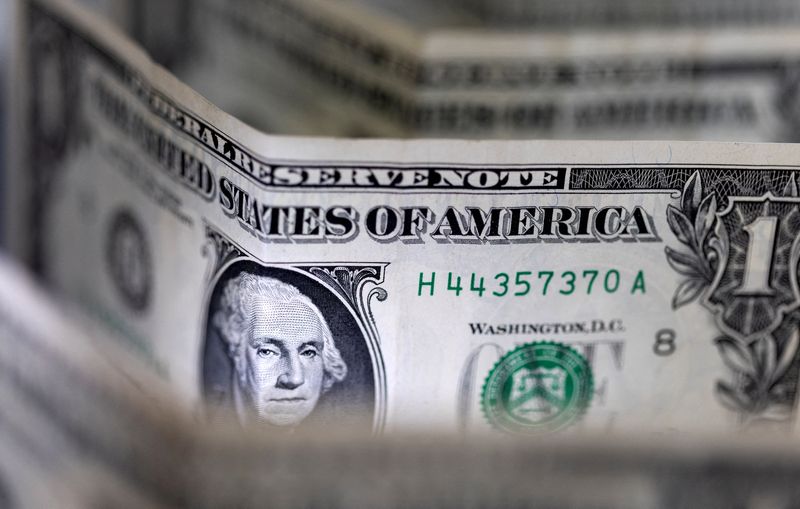Investing.com - U.S. investors are losing control of their own currency, according to Bank of America (NYSE:BAC) Securities, with increased foreign demand the prime driver.
At 10:40 ET (14:40 GMT), the Dollar Index, which tracks the greenback against a basket of six other currencies, traded 0.1% lower at 105.000, but was still well over 3% higher so far in 2024.
Breaking down the USD rally across U.S., European, and Asian time zones, the U.S. bank sees that the dollar was largely unchanged in U.S. trading hours, with the overall move having the highest correlation to European hour moves, followed by Asian hour moves this year.
This increased foreign demand for the dollar in 2024 has been driven by a combination of favorable carry and growth differential for the U.S., analysts at BoA Securities said, in a note dated June 10.
On the back of more aggressive Fed rate hikes over the past two years, the U.S. dollar already had higher yield versus G10 peers, and so far in 2024, the rate cutting cycles have broadly started among central banks in Europe (European Central Bank, Swiss National Bank, and Riksbank have all cut policy rate by 25 basis points).
In Asia, the Bank of Japan exited its negative interest rate regime but the level of yield remains low.
As a result, the carry/vol ratios have been widening more in favor of the dollar this year.
Many U.S.-based investors looked to a U.S. economic “soft landing” as reason to fade the dollar’s strength. Yet while the first quarter 2024 U.S. growth rate has sequentially moderated to 1.3% from the outsized growth rate seen in the first half of 2023, the U.S. still had the second-highest Q1 2024 growth rate in G10 (Exhibit 4).
Moreover, 2024 consensus growth revisions have increased more for the U.S. than elsewhere.
Naturally, the yield and growth advantages appealed to investors outside of America.
In addition, global investors have increased investment in US-based “AI” stocks and resulting portfolio flows have also supported the dollar.
“With U.S.-based investors' influence on the USD at a multi-year low, more USD supply from Europe is needed for USD to weaken,” the bank added.
